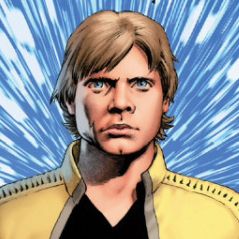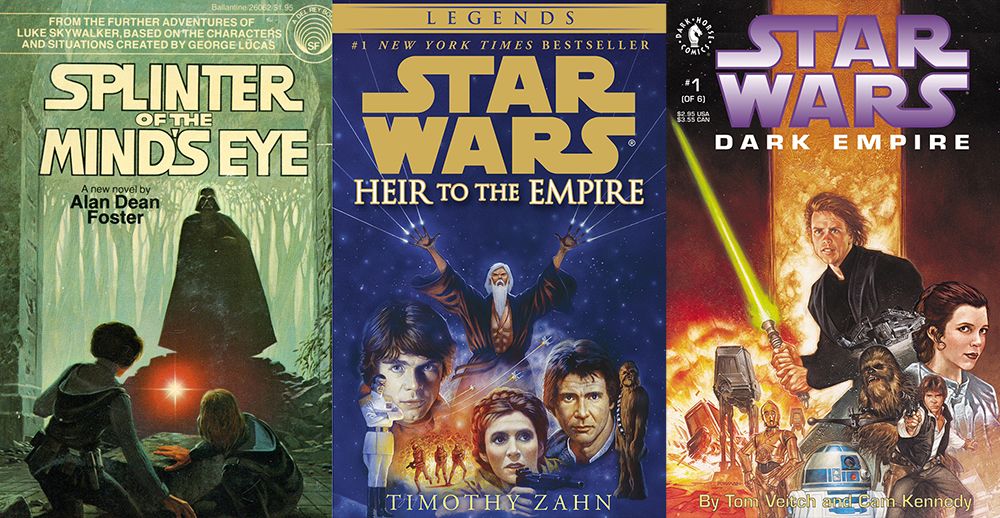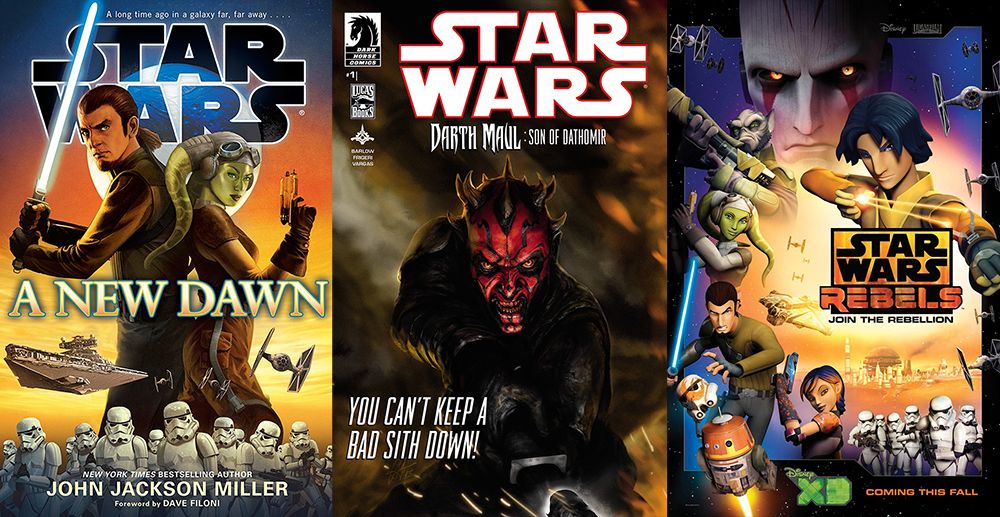Paul S. Kemp's upcoming "Star Wars" novel "Lords of the Sith" recently made news because it will bring the first LGBT character into the canon of a galaxy far, far away. The key word here is canon, of course; LGBT characters previously existed in the "Legacy of the Force" novels that ran from 2006 to 2008, but recent developments at Lucasfilm have since knocked those books out of official continuity.
In April 2014, the company behind "Star Wars" announced a massive change to the old canonical hierarchy used to organize the way the films and television series interact with books, comic books and games. Titles belonging to what was then known as the Expanded Universe -- pretty much everything released prior to that decisive article's publication -- transitioned to new banner called Legends. Any material published since April 2014 is now considered canon, which is another way of saying that it exists in the same continuity as the "Star Wars" films and television series.
The decision to reset the official canon, established across 35 years of novels, comics, games and more came about because of the franchise's sale to Disney and the announcement of new, expansive slate of feature films. Lucasfilm's statement regarding the Expanded Universe reads, "In order to give maximum creative freedom to the filmmakers and also preserve an element of surprise and discovery for the audience, 'Star Wars Episodes VII-IX' will not tell the same story told in the post-'Return of the Jedi' Expanded Universe."
With that in mind, and to get a clear idea of how things stand now, we have to take a look at how "Star Wars" grew from one standalone sci-fi throwback film in the late '70s to a massive universe of interconnected stories in 2014.
Canon of the Past
Soon after "Star Wars" debuted in May 1977, new material quickly began to expand the borders of the "Star Wars" universe. There were the novelizations of the movies, of course, as well as Marvel Comics' adaptation of the film. By December of that year, the Marvel comics began telling new stories set in-between big screen installments -- something they would continue to do until 1986. Not long after Marvel began publishing new "Star Wars" stories, the first original novel hit the market: "Splinter of the Mind's Eye" by Alan Dean Foster. A trilogy of novels by Brian Daley collectively titled "The Han Solo Adventures" was released in 1979, and L. Neil Smith's "Adventures of Lando Calrissian" trilogy followed in 1983. West End Games filled out the universe with "Star Wars: The Roleplaying Game" and their Star Wars sourcebooks were sent to author Timothy Zahn when he was hired to write what would become known as the Thrawn trilogy. The first book of that series, "Heir to the Empire," was published in 1991 and helped kick the Expanded Universe into high gear as Star Wars books, comics and games continued to flow onto store shelves.
As the amount of Star Wars content grew, so did the amount of information that had to be recorded. Lucasfilm needed to keep track of characters, locations, weapons and other minutiae, and it had to decide what could and could not be used in Star Wars stories. Establishing a system of canon helped it make those decisions, ensuring that Expanded Universe material would never contradict anything in the films. In early 2000, Leland Chee was given the task of creating a database, now known as the Holocron, to manage continuity through a tiered system.
The top tiers -- labeled George Lucas canon (G-canon) and Television canon (T-canon) -- consisted of the six films, the animated film "Star Wars: The Clone Wars," the television series "Star Wars: The Clone Wars," film novelizations and other primary sources. G-canon -- the canon consisting of the six films -- was absolute and above T-canon.
Continuity-canon (C-canon) was the third tier (below G-canon and T-canon), and included much of the Expanded Universe content, such as books, comics and RPG sourcebooks. Anything in C-canon could be overridden by levels above it -- and it often was. Some events in the "Clone Wars" TV series contradicted and replaced stories in the Expanded Universe. Similarly, Expanded Universe backstories created for characters like Boba Fett in the '80s and '90s were rewritten upon the release of the prequel trilogy of films.
In a sense, then, the Expanded Universe was never truly canon because it could rather easily be superseded. Some C-canon elements did work their way up to G-canon, though; the planet name Coruscant originally appeared in Zahn's "Heir to the Empire" novel and was later used in the Special Edition of "Return of the Jedi" in 1997 before becoming a major setting in the prequels.
As if all this wasn't confusing enough, there were still two more tiers: Secondary canon (S-canon) and Non-canon (N-canon). S-canon refers to material that could be used or ignored by authors as they saw fit; for the most part this included material published immediately after the release of "Star Wars" in 1977 that was created before there was an effort to keep track of continuity. N-canon described stories that were intentionally written to exist outside of canon. Not confusing at all, right?
Current State of the Canon
Canon became simpler with an announcement from Lucasfilm on April 25, 2014. Lucasfilm moved all the Expanded Universe content -- pretty much everything rated C-canon -- to the Legends banner. With this fresh start in place, new content -- be it books, comics, films, games or television -- would be part of the same unified canon as the existing films and television series. Lucasfilm formed the Story Group to determine what would become part of continuity; members of this group are responsible for overseeing and coordinating all "Star Wars" creative development. They provide the glue that keeps continuity together by giving book and comic book creators guidance to ensure their stories remain cohesive with the television and film side.
The first of many new entries into this unified canon are as follows:
First prose story: "Blade Squadron" by David J. Williams and Mark S. Williams, published in "Star Wars Insider" #149 and #150 in April and June 2014
First novel: "A New Dawn" by John Jackson Miller, released on March 31, 2015
First comic: "Darth Maul: Son of Dathomir" by Jeremy Barlow and Juan Frigeri, published by Dark Horse Comics between May and August 2014, is considered canon due to its extensive ties to the "Star Wars: Clone Wars" TV series; otherwise, Marvel Comics' "Star Wars" #1 by Jason Aaron and John Cassaday from January 2015 marks the new canon's fresh start.
On screen: "Star Wars Rebels," which debuted on October 3, 2014
Wookieepedia maintains a timeline of everything in canon, but there's a simple way to determine whether a Star Wars story "counts." Is it one of the six films? Is it an episode of "Star Wars: The Clone Wars" or "Star Wars Rebels"? Was it published after April 2014? If so, for the most part, it's an in continuity tale. So if you've been looking for a jumping on point with the Star Wars universe, now's the time -- because all of the new novels, comics, TV episodes and films that are on the way are going to fill this canon up fast.



